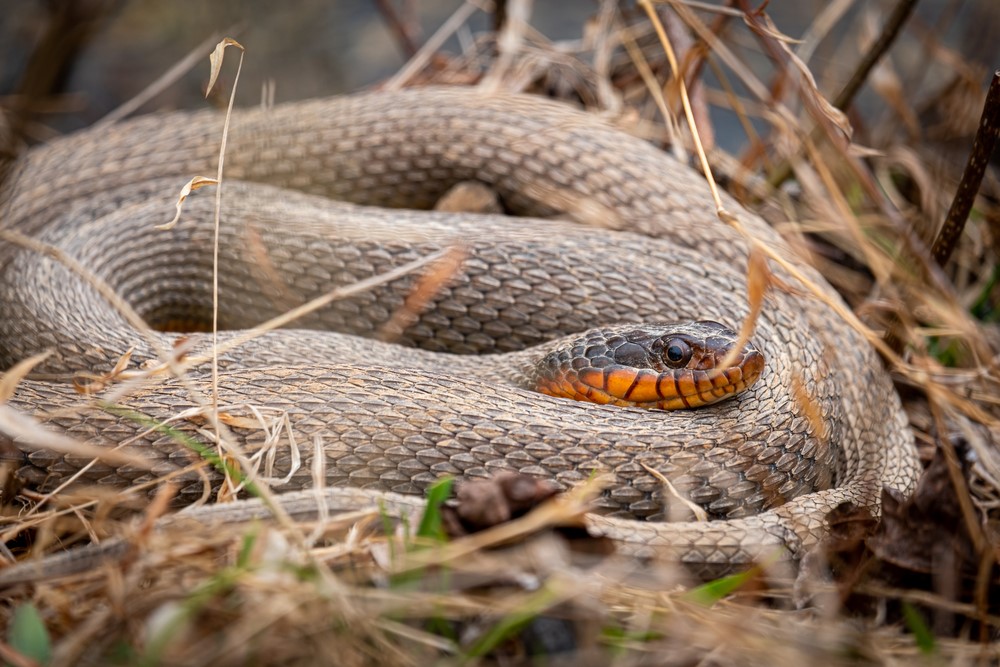What are the Snakes?
Snakes are fascinating creatures that come in a wide variety of shapes, sizes, and colors. They can be found on every continent except Antarctica. Snakes have no legs or arms, but they make up for this lack of appendages with an incredibly long body that can stretch out to as much as 30 feet! Snakes are also known for the unique way they move, which involves pushing against the ground with their bodies in a wave-like motion. While some snakes are nonvenomous, others can be quite dangerous and it’s important to know how to identify venomous species if you come across one in the wild. Snakes play an important role in many ecosystems by helping to keep the populations of rodents, insects, and other small animals in balance. Some species also act as pollinators or seed dispersers, making them vital to their local environment. Snakes have long been feared and misunderstood, but they can be fascinating creatures when seen up close.
Snakes in North Carolina
Snakes are an important part of North Carolina’s ecosystem. Many snakes in the state are found nowhere else but here, as the Tar Heel State has a large variety of habitats and climates that attract different species. The most common snake in North Carolina is the black rat snake, which can be found throughout the state. Other popular species include the eastern milk snake, corn snake, northern water snake, and copperhead. The timber rattlesnake is the only venomous species in the state, and it can be found in mountainous areas or along rivers and streams. While all snakes should be respected and given space to roam free, those that are venomous should be left alone and not approached.
In addition to snakes, other interesting animals can be found in North Carolina’s diverse habitats. The state is home to a variety of birds, including cardinals, blue jays, woodpeckers, and owls. Amphibians like frogs and salamanders are also popular inhabitants in the state’s wetlands and streams. Finally, the state is home to many species of mammals such as deer, black bears, coyotes, and opossums.
North Carolina is a great place for wildlife viewing. Many parks offer excellent opportunities to view animals in their natural habitats. Visitors can also enjoy kayaking or fishing trips along the coast or mountain hikes through forests and meadows. In addition, several wildlife refuges and sanctuaries have been established throughout the state to protect endangered species and promote conservation efforts. Whether you are a novice or an expert when it comes to wildlife viewing, NC has something for everyone. With its abundance of natural resources and many habitats, one can easily find a variety of animals in the state. From songbirds to the majestic bald eagle, NC has a wide selection of wildlife that can be viewed throughout the year.
Top 20 Snakes in North Carolina
North Carolina is home to over 40 species of snakes, but the following five are among the most commonly seen:
1. Copperhead:

This venomous snake can be identified by its reddish-brown color with darker brown bands and a yellow tail. It is found in most habitats throughout the state.
2. Corn Snake:
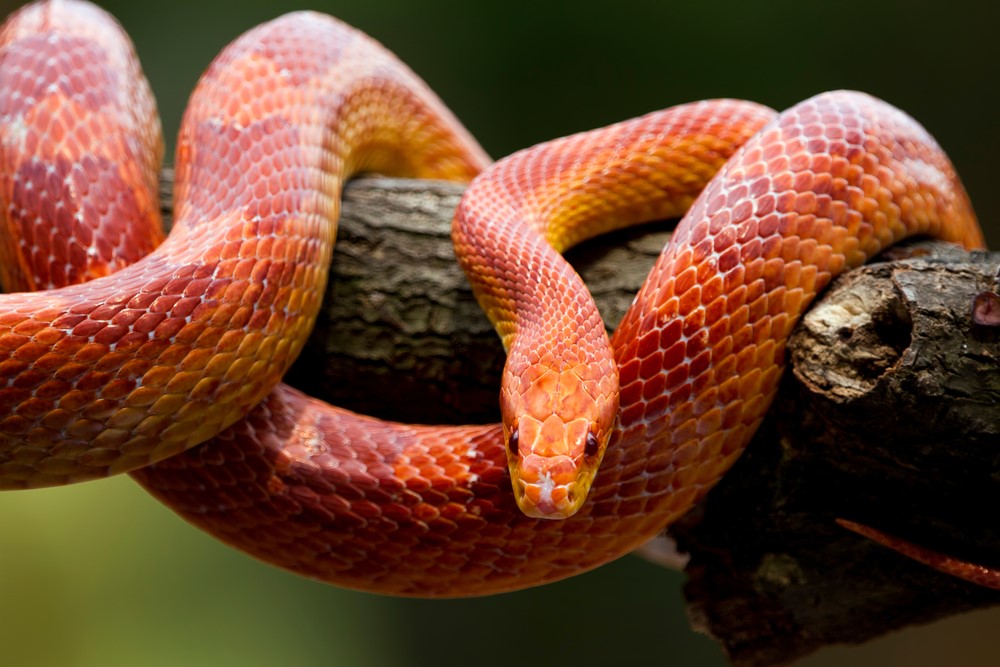
This non-venomous snake is easily identified by its orange, black and white banded pattern. It can be found throughout North Carolina in fields and woodlands.
3. Eastern Kingsnake:
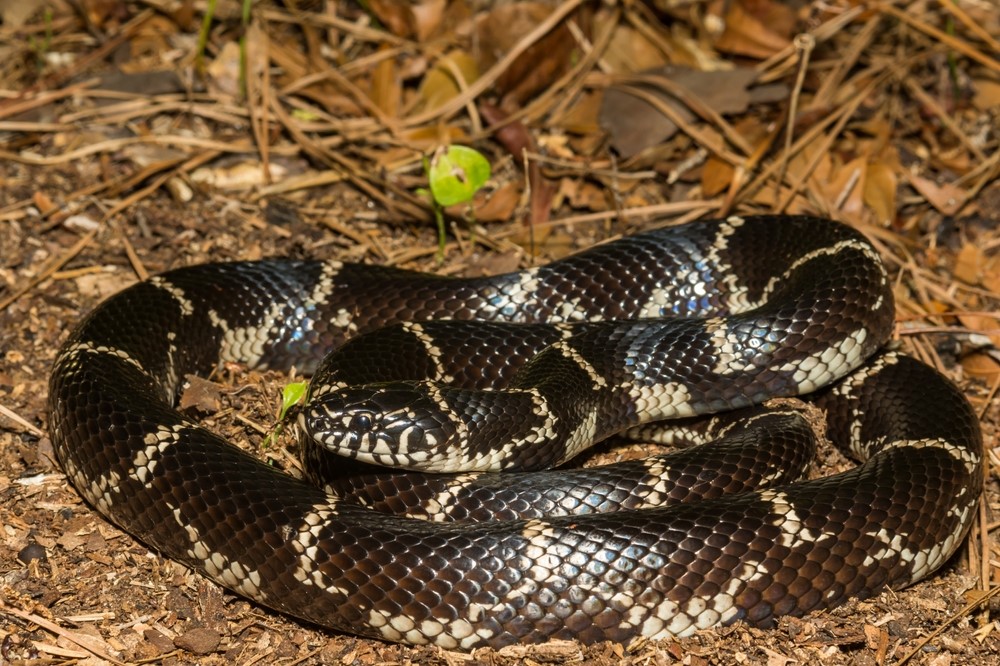
This non-venomous snake is mainly black with white or yellow stripes, though some may have reddish coloration as well. It is found in woodlands and forests throughout the state.
4. Eastern Milksnake:
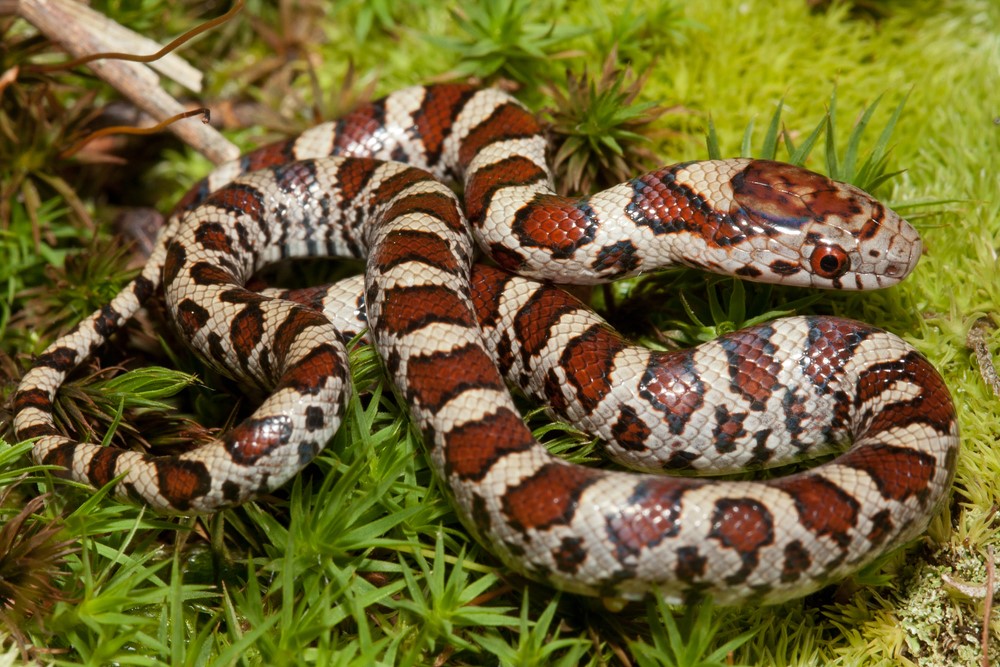
This non-venomous snake can be identified by its gray or tan coloration with black, red and white bands. It is found in North Carolina’s woodlands and fields.
5. Eastern Ratsnake:
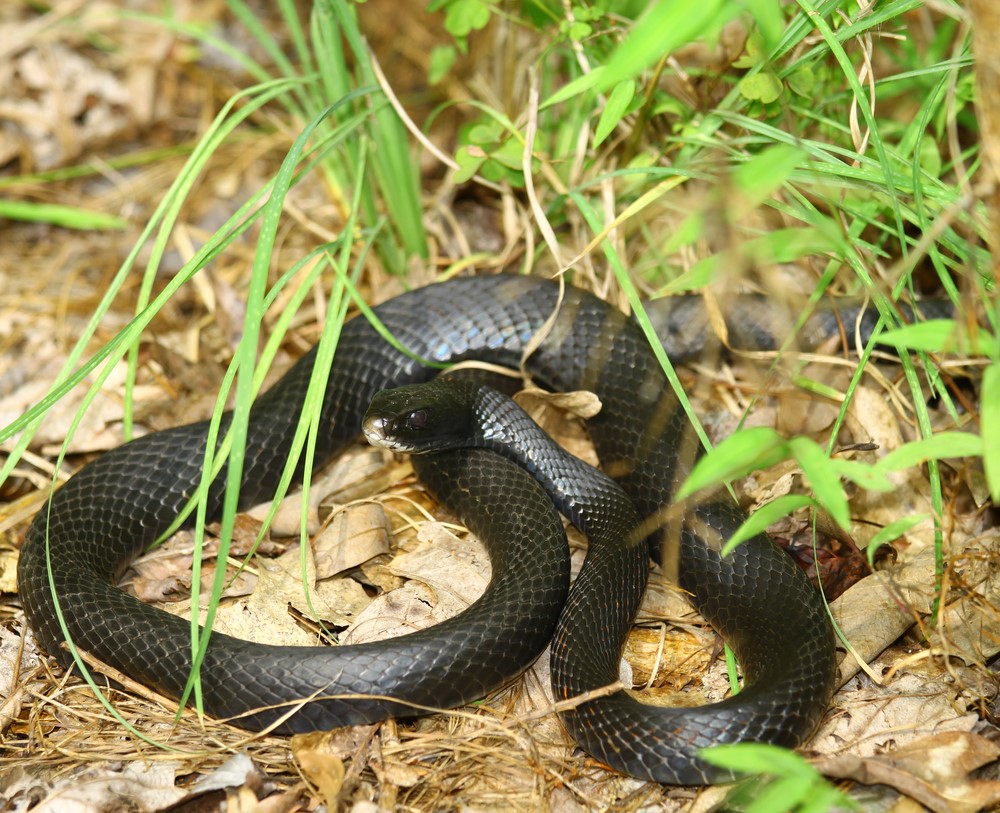
This non-venomous snake is easily identified by its black or brown coloration with white, yellow or orange stripes. It is found in woodlands and fields throughout NC.
6. Southern Ringneck Snake:
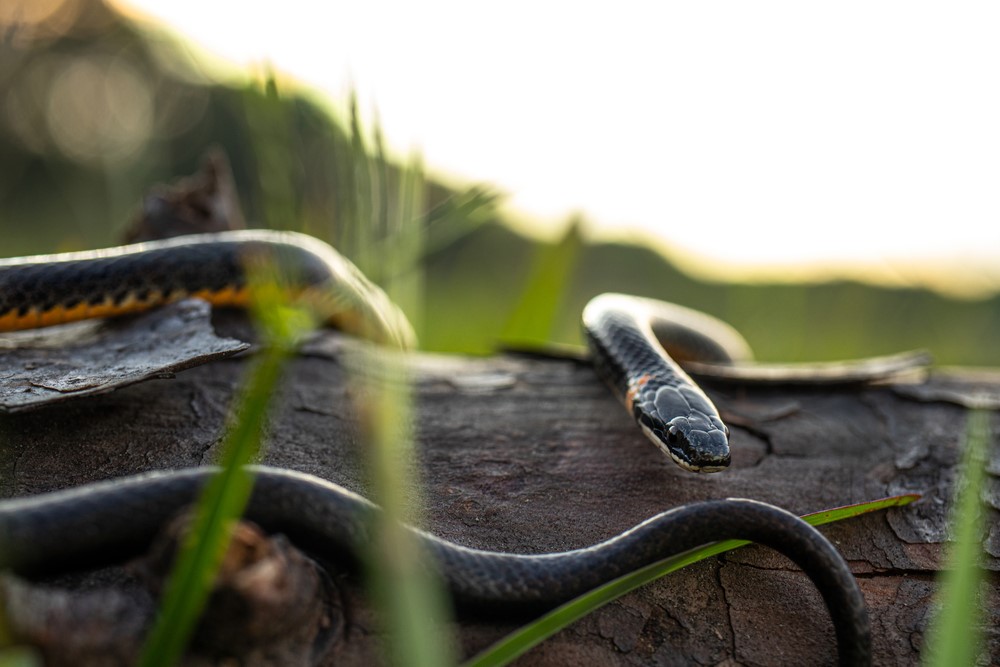
This non-venomous snake is recognizable by its black or brown body with yellow rings around the neck and a yellow underside. It can be found under rocks and logs in forests, fields and wetlands throughout North Carolina.
7. Eastern Copperhead:
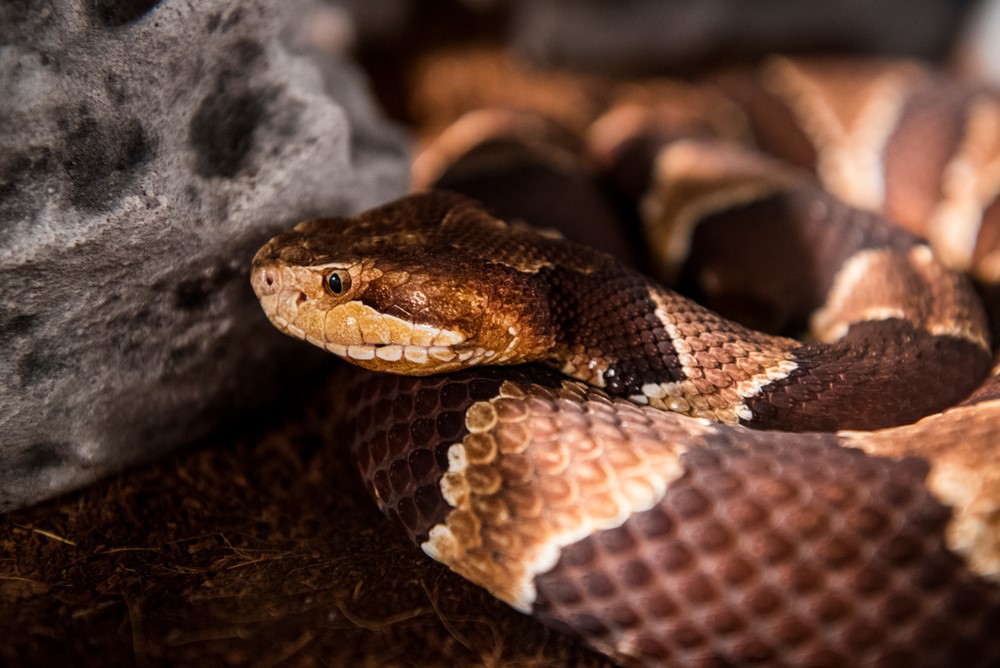
This venomous snake is recognizable by its copper-colored body with darker hourglass markings on its back. It can be found in forestssnakes in north carolina, as well as near wetlands and streams throughout the state.
8. Eastern Ribbon Snake:
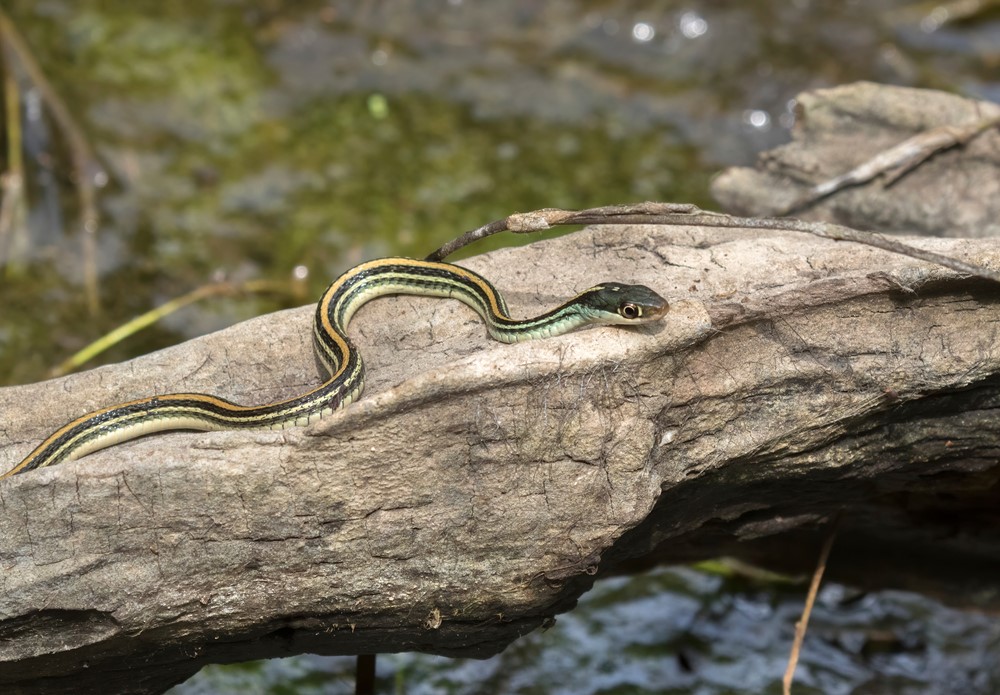
This non-venomous snake has a black or brown body with three light yellow stripes running down its length. It is found in wetland areas, marshes and near water sources throughout the state.
9. Eastern Hog-nosed Snake:
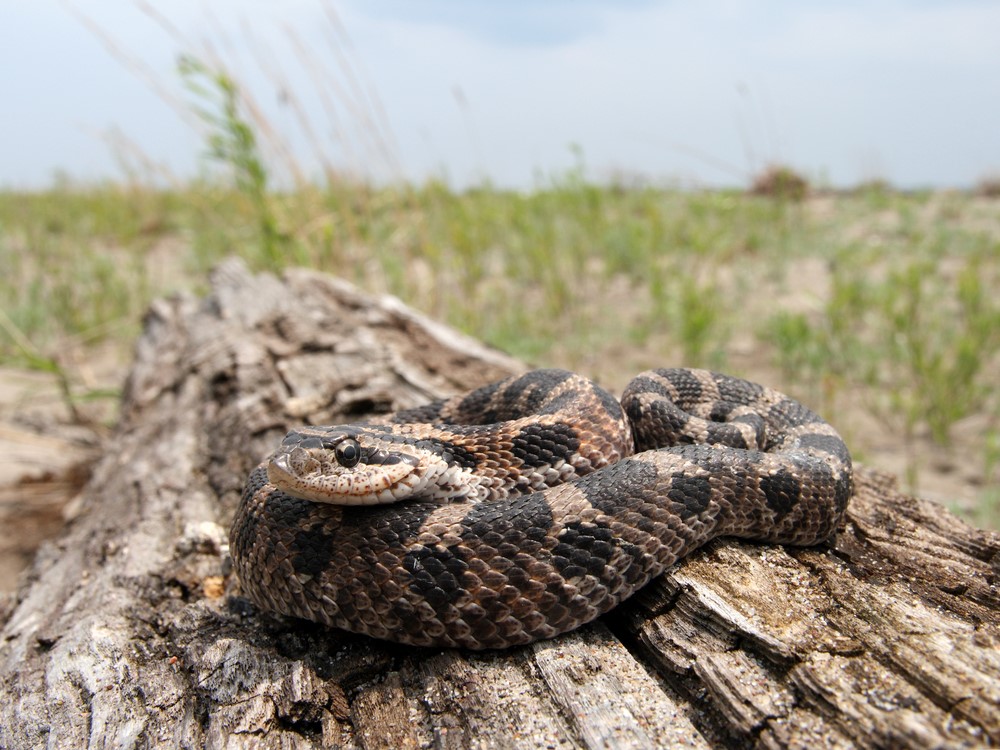
This non-venomous snake has a brown or gray body with dark blotches down its length. It can be found in wooded areas and along streams in North Carolina.
10. Northern Water Snake:
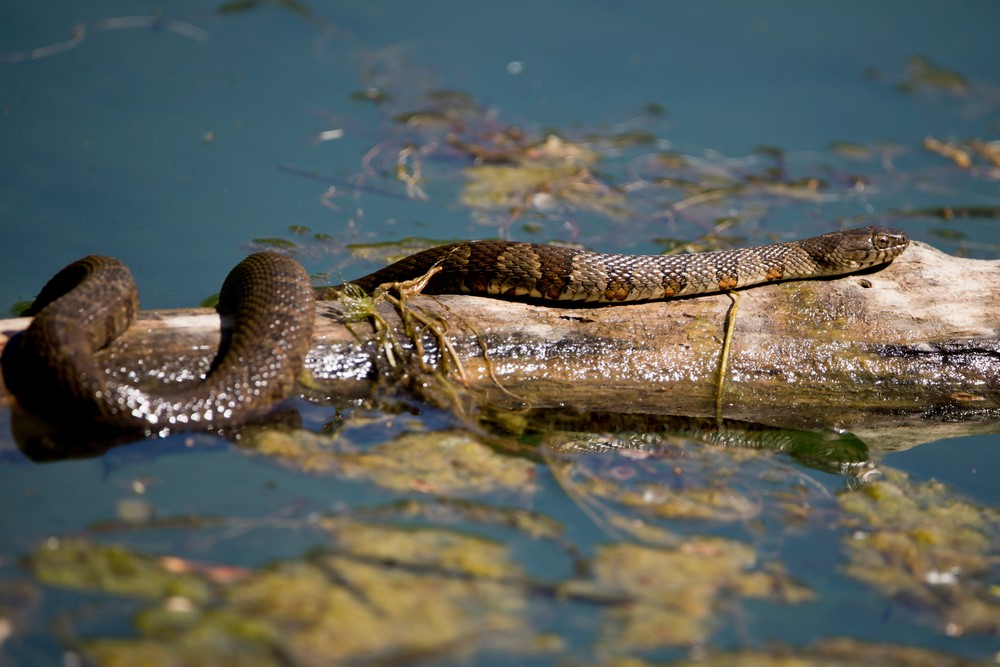
This non-venomous snake has a brown or gray body with dark blotches down its length. It can be found near water sources and in wetlands throughout the state.
11. Black Rat Snake:
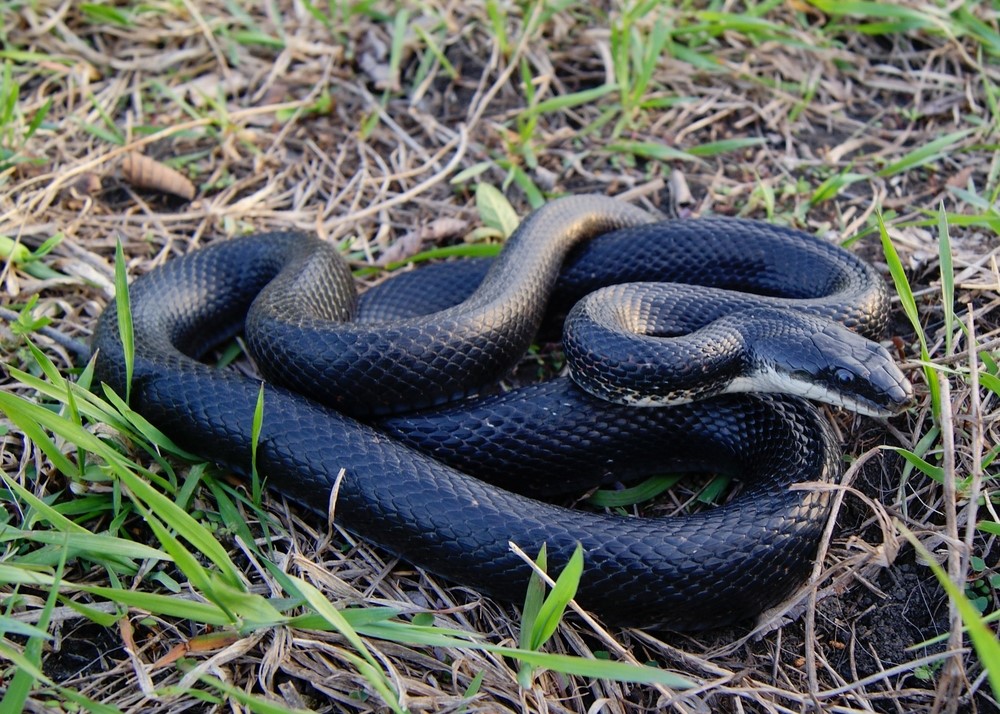
This non-venomous snake has a black or gray body with white or yellow stripes running down its length. It can be found in wooded areas, fields and swamps throughout North Carolina.
12. Diamondback Rattlesnake:
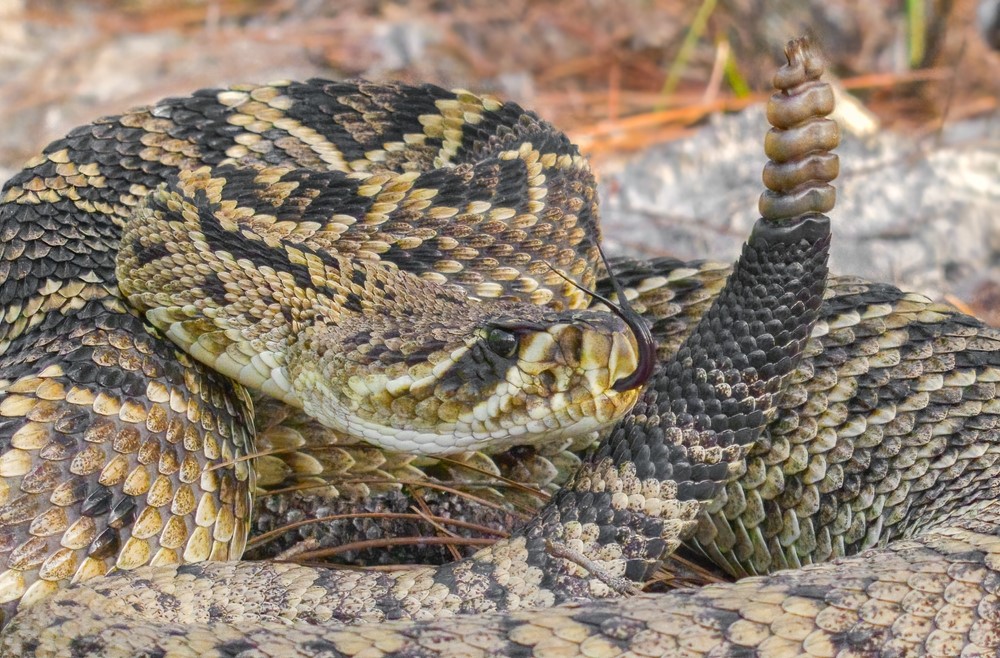
This venomous snake has a diamond-patterned skin with yellow or tan bands running down its length. It can be found in dry, rocky areas and wooded hillsides throughout the state.
13. Eastern Hognose Snake:

This non-venomous snake has a gray or tan body with dark spots. It can be found in forests, grasslands, and wetlands throughout NC.
14. Copperbelly Water Snake:
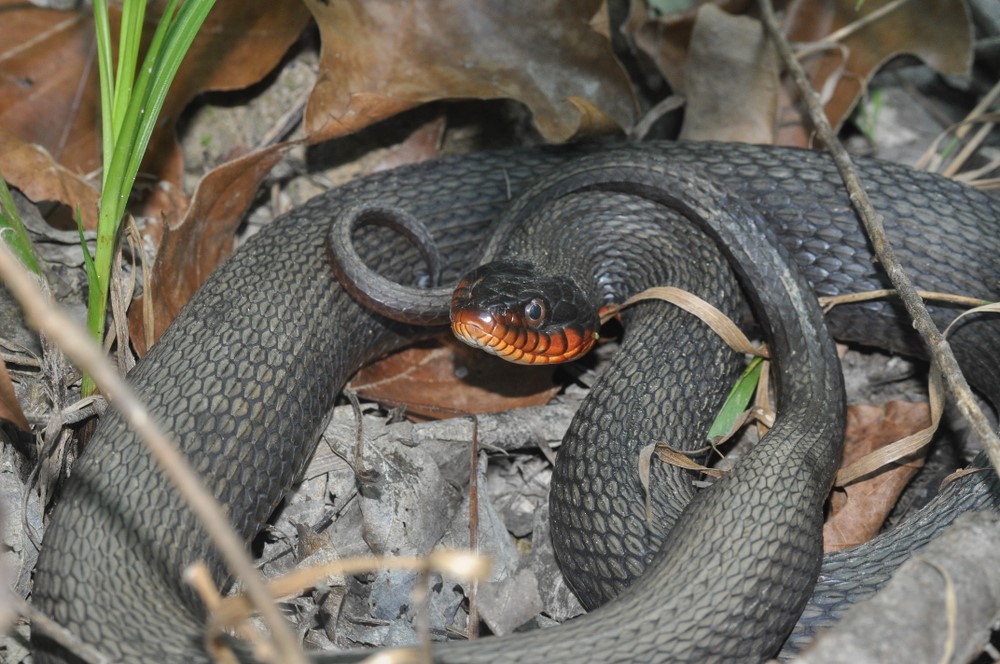
This semi-aquatic, non-venomous snake has a copper-colored belly and dark brown body with white or yellow stripes on its back. It can be found near ponds, streams, rivers, and marshes throughout the state.
15. Eastern Rat Snake:
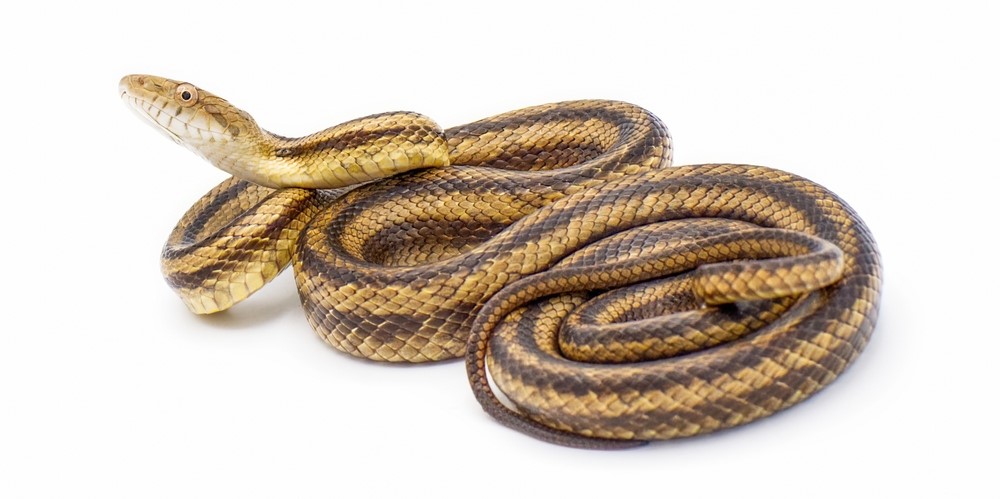
This non-venomous snake has a gray or tan body with black, brown, or reddish blotches running down its length. It can be found in forests, fields, and may even enter homes and barns throughout North Carolina.
16. Northern Cottonmouth:

This venomous snake is black or dark brown in color and can be identified by its signature white stripe running down the center of its face. It is found near wetlands, ponds, lakes, and rivers throughout North Carolina.
17. Eastern Garter Snake:

This non-venomous snake has a black body with three yellow stripes running along its length. It can be found in moist areas, woods, and fields throughout North Carolina.
18. Redbelly Snake:

This small, non-venomous snake is brown in color with a red underside. It is found in wooded areas and gardens, hunting small animals such as insects and worms.
19. Brown Water Snake:
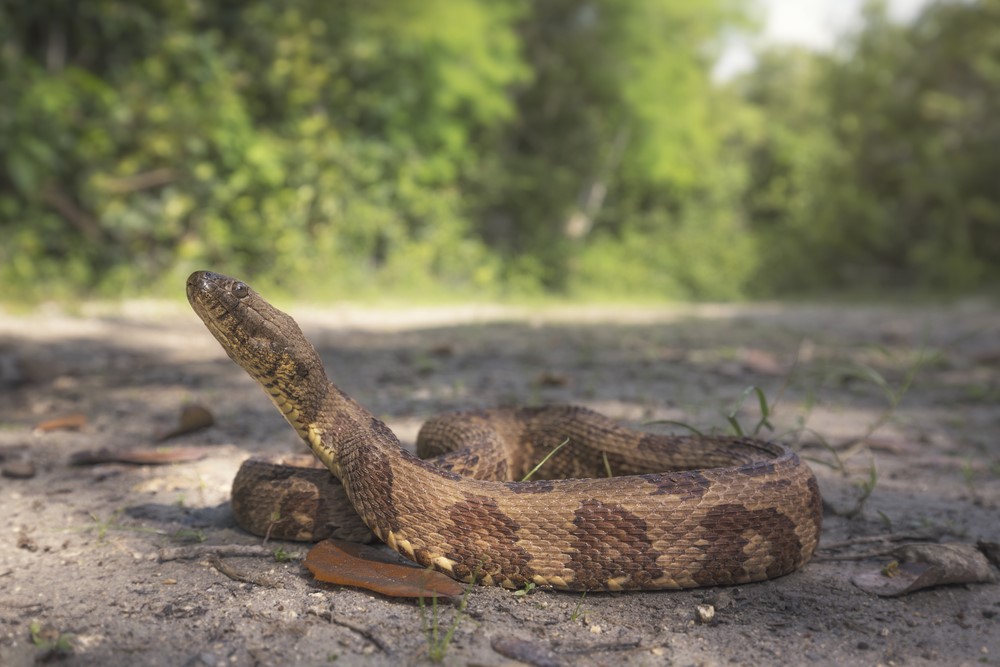
This medium-sized, non-venomous snake has a brown body with dark spots and stripes. It is commonly found near wetland areas such as ponds, marshes, and streams throughout North Carolina.
20. Eastern Coachwhip Snake:

This large, non-venomous snake is mostly black in color with a reddish-brown head and neck. It can be found in open woodlands and prairies throughout the state.
Where to find Snakes in North Carolina
Snakes are an essential part of North Carolina’s natural ecosystem. They can be found throughout the state, from the coast to the mountains. In most areas, they prefer wooded and brushy habitats with plenty of ground cover such as leaves and logs. Snakes are also commonly spotted near streams and rivers, especially in summer months when they cool down in the water. Many species of snakes can be found in urban and suburban areas, such as Eastern rat snakes, corn snakes, and northern brownsnakes.
In coastal areas of NC, you may come across a variety of sea snakes and even rarer species like the eastern coachwhip snake. The Great Smoky Mountains National Park is also a great place to observe a variety of snakes in their natural habitat. With more than 60 species of snake living in North Carolina, it’s not uncommon to come across one while you’re out exploring the state.
Are there venomous snakes in North Carolina?
Yes, there are a few venomous snakes in North Carolina. These include the eastern copperhead, cottonmouth, timber rattlesnake, and pygmy rattlesnake. It is important to never attempt to handle or move these snakes as their venom can cause serious injury or death if not treated quickly.
Are there many snakes in North Carolina?
Yes, there are many snakes in North Carolina. The state is home to more than 60 species of snake, making it one of the most diverse areas for snake populations in the United States. Whether you’re exploring wetlands or hiking through forests and meadows, you’re likely to come across a variety of different types of snakes in NC.
Are black mambas in North Carolina?
No, black mambas are not found in North Carolina. They are native to the savannas and rocky hills of southern and eastern Africa. While there are other venomous snakes found in North Carolina such as copperheads, timber rattlesnakes, cottonmouths (or water moccasins), and pigmy rattles.
What is the most venomous snake in North Carolina?
The Eastern Diamondback Rattlesnake is the most venomous snake found in NC. It is a large, heavy-bodied snake that can reach up to 8 feet long and is identifiable by its diamond patterned back. While it is unlikely to attack humans, they should still be treated with caution and given plenty of space as they are highly venomous and can cause serious injury or death if bitten. eat
Read an article on the Top 16 Venomous Snakes in Oklahoma

